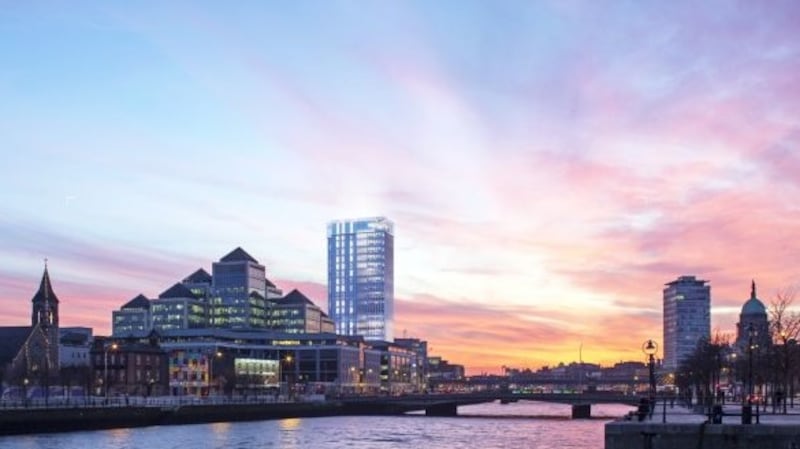A 22-storey landmark building beside Dublin’s Tara Street station would be “an exemplar design of architectural merit” utilising “elegant detailing and a palate of high quality materials”.
That is according to one of Ireland’s most prominent firms of architects Henry J Lyons, who designed the 88-metre high building for well-known property developer, Johnny Rohan.
Mr Ronan’s company Tanat Ltd was refused planning permission for the development by Dublin City Council in July.
At a planning appeal on Thursday Wednesday Paul O’Brien chairman of Henry J Lyons and a Fellow of the Royal Institute of the Architects in Ireland, said the proposal included a 110 bedroom hotel and a new entrance to Tara Street railway station, in the first four storeys of a five-storey podium building, fronting onto Tara Street.

Rising from this would be a “tall building” incorporating 10,361 sq m of office space on floors five to 20, and a rooftop restaurant of some 500 sq m at “penthouse level”, Mr O’Brien said.
Dublin City Council’s local area plan called for the provision of a “landmark building” not a landmark tower, he said and the proposed development would be “a tall slender and elegant building”, Mr O’Brien said.
He told the Bord Pleanála hearing the proposed “landmark building” was “elegant, timeless and not flashy”. He said the finish was the result of recommendations of a panel of national and international experts and the design would be “timeless but very, very rich in its detailing”.

He said the podium building would be clad in a rich stone used at the base of the Criminal Courts of Justice while glass sheeting at rooftop level was a specialist design which had been used at the Shard building in London and the Vodafone building in Leopardstown, Dublin and would give enhanced reflection of the sky.
Earlier Eamon Galligan SC for Tanat Ltd told the hearing that while the company had launched a first party appeal there was much in common between the proposed development and the local area plan’s call for a landmark building. He said the local area plan had called for a building to visually compliment Liberty Hall, located across the river. It had also called for a “twin” for liberty hall to mark the entrance form the docklands to the city, and a landmark building identifying the transport hub making a focus point on the loop line railway bridge.
Mr Galligan said the city council had called for a landmark building but in its refusal had appeared to be surprised that a landmark building would have a visual impact on the area.
The city architect had also claimed the finishes had not been detailed in the application, but in fact there had been 13 meetings with city council planners and samples of the finish had been provided.
Mr O’Brien said there was more detailed designs and details of the finishes provided than most other proposals he had seen in his career.
The development is opposed by the Irish Georgian Society and An Taisce which said the development would affect buildings as far away as Grafton Street. The hearing continues.












